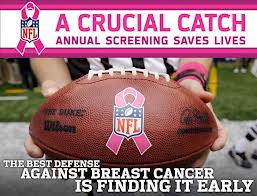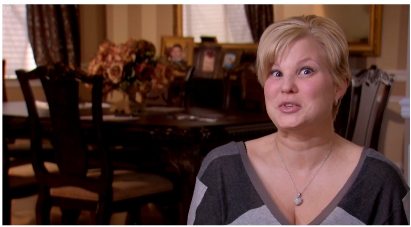 In the weeks leading up to the government shutdown, I heard some rumblings via the news media that Senator Ted Cruz and those aligned with him were dragging things out in Congress to maximize their online and direct mail fundraising efforts. To be honest, I didn’t give much thought to those accusations. They sounded like sour grapes and something partisan opponents would say in the heat of the moment. And then . . . when the government actually shut down, I started receiving a flood of email from the Democratic Congressional Campaign Committee (DCCC). This is when my fundraising spidey-sense started to tingle, and I started paying attention because there must be lessons to be learned for non-profit organizations somewhere in this mess.
In the weeks leading up to the government shutdown, I heard some rumblings via the news media that Senator Ted Cruz and those aligned with him were dragging things out in Congress to maximize their online and direct mail fundraising efforts. To be honest, I didn’t give much thought to those accusations. They sounded like sour grapes and something partisan opponents would say in the heat of the moment. And then . . . when the government actually shut down, I started receiving a flood of email from the Democratic Congressional Campaign Committee (DCCC). This is when my fundraising spidey-sense started to tingle, and I started paying attention because there must be lessons to be learned for non-profit organizations somewhere in this mess.
Here is what the most recent DCCC fundraising email said:
Dear Erik —
Boehner’s Tea Party majority is teetering on the edge:
A new poll shows that Democrats are leading SEVENTEEN Republican Congressmen after the Tea Party-inspired shutdown. Guess how many seats we need to win back a Democratic Majority? 17.
Voters are done putting up with the extreme Tea Party antics that have paralyzed the government. We have to act quickly to press our advantage in these crucial races. Will you help us raise $500,000 immediately to take on vulnerable House Republicans?
Donate $3 IMMEDIATELY to the Democratic Majority Rapid Response Fund.
This shutdown could spell the end of the Tea Party controlled Republican Majority.
But if we want that to happen, we have to act now.
Thanks,
DCCC Rapid Reponse
I purposely omitted the hyperlinks and website addresses because my intention is to evaluate language and strategy and not raise money for the DCCC.
So, let’s strip out the partisanship and set aside our personal political feelings. Let’s avoid the temptation to point fingers. Let’s just look at the circumstances, strategies and verbiage in the letter from a “Just the facts, ma’am” perspective.
What do you see? What do you sense?
 Here is what I’m seeing:
Here is what I’m seeing:
- I see a misspelling in the signature block.
- I see a case for support spelled out in five simple sentences.
- I see emotionally charged words intended to poke and prod me into action (e.g. teetering, extreme, paralyzed, etc).
- I see a fundraising goal clearly articulated (e.g. $500,000).
- I see a specific ask (e.g. Donate $3.00 immediately).
- I sense the strategy here is to set a very low barrier to entry to entice first time donors. In other words, they poke me, I get upset, and the solution is as simple as just giving $3.00 to make things right again.
- I see an email with a small handful of carefully worded sentences fitting neatly on my computer screen. I don’t need to scroll down to continue reading.
- I see short easy to read sentences. The longest sentence was 16 words long.
There is so much that you can learn if you just keep your eyes, ears and mind open. Professional fundraisers cram your mailbox and email inbox full of examples every day. Are you paying attention? Because with a little discipline you can teach yourself a lot in a short period of time.
Let’s circle back to the question I pose in the headline of this blog post:
Did fundraising cause the recent government shutdown?
I think a case can be made for the answer to this question being “YES”.
There is so much noise being made in our political arena on a daily basis that many people tune things out. I know that I am as guilty as others in this regard. So, when you have fundraising goals to hit, then your case for support needs to be very big and noisy in order to get people’s attention.
I believe the lesson to be learned here for non-profit organizations is that your case for support is powerful. It is the engine at the center of your resource development plan. It is the jet fuel for all of your fundraising appeals regardless of whether it is a direct mail appeal, email, social media, telephone solicitation, face-to-face pledge drive or special event.
 When crafting your case for support, this is what our friends in the political fundraising world seem to be telling their non-profit cousins:
When crafting your case for support, this is what our friends in the political fundraising world seem to be telling their non-profit cousins:
- Make it emotional
- Focus on an issue that people care about
- Choose an issue that donors and the media will talk about and magnify
- Wrap marketing efforts around your fundraising efforts
- Where possible, infuse advocacy into the appeal
For those of you who are skeptical and find yourself thinking at the end of this blog post that non-profit organizations can’t “manufacture” a crisis and weave it into a case for support like politicians, then let me suggest that you open your mind a little more.
I cannot tell you how many agencies I’ve seen neglect their buildings by minimally investing in maintenance and upkeep. In the final analysis, aren’t those agencies just slowly creating a powerful capital campaign case for support for down the road? Maybe it is purposeful and maybe it isn’t, but the fact that it is a manufactured crisis cannot be denied.
There are plenty of needs and gaps in our communities around which non-profit organizations can build a powerful case for support. We don’t need to manufacture crisis to raise money like our political counterparts, but it does happen more often than you think.
So, what are you waiting for?
It is the fourth quarter and year-end fundraising is one of the biggest shows on Earth. Start writing your case for support document today so you can transform it into an eloquent and powerful fundraising appeal in the next few weeks.
But whatever you do, please don’t “shutdown” your agency to make a buck or two. I suspect donors can only handle this strategy in small doses. 😉
And I am making a mental note to myself . . . perhaps, I need to stop tuning out politicians on a daily basis so they stop doing drastic things to get my attention. 😉 (Sorry, I just couldn’t help myself.)
Here’s to your health!
Erik Anderson
Founder & President, The Healthy Non-Profit LLC
www.thehealthynonprofit.com
erik@thehealthynonprofit.com
http://twitter.com/#!/eanderson847
http://www.facebook.com/eanderson847
http://www.linkedin.com/in/erikanderson847

 Over the years, I’ve urged non-profit organizations to exercise tremendous caution when contemplating a cause related marketing strategy as part of their resource development plan. There was the December 2012 post titled “
Over the years, I’ve urged non-profit organizations to exercise tremendous caution when contemplating a cause related marketing strategy as part of their resource development plan. There was the December 2012 post titled “
 If you want to know more about this campaign, Forbes magazine’s Alicia Jessop did a nice job in an October 2012 article titled “
If you want to know more about this campaign, Forbes magazine’s Alicia Jessop did a nice job in an October 2012 article titled “ Welcome to O.D. Fridays at DonorDreams blog. Every Friday for the foreseeable future we will be looking at posts from John Greco’s blog called “
Welcome to O.D. Fridays at DonorDreams blog. Every Friday for the foreseeable future we will be looking at posts from John Greco’s blog called “ Do you know Jay Love? Of course, you know this gentleman, but you just may not know that you know him. Many non-profit professionals know Jay as the man who innovated the online donor database system known as eTapestry. More recently, you may have heard whispers about a new online CRM product called Bloomerang, which focuses on donor loyalty instead of more transactional metrics found in traditional donor databases. Well, that is Jay’s newest gift to the non-profit sector.
Do you know Jay Love? Of course, you know this gentleman, but you just may not know that you know him. Many non-profit professionals know Jay as the man who innovated the online donor database system known as eTapestry. More recently, you may have heard whispers about a new online CRM product called Bloomerang, which focuses on donor loyalty instead of more transactional metrics found in traditional donor databases. Well, that is Jay’s newest gift to the non-profit sector.
 Welcome to O.D. Fridays at DonorDreams blog. Every Friday for the foreseeable future we will be looking at posts from John Greco’s blog called “
Welcome to O.D. Fridays at DonorDreams blog. Every Friday for the foreseeable future we will be looking at posts from John Greco’s blog called “ The point I’m trying to make is that most non-profit organizations have built a culture that revolves around THE CLIENT. This focal point is so intense that ideas threatening to shift that focus are often seen as heresy.
The point I’m trying to make is that most non-profit organizations have built a culture that revolves around THE CLIENT. This focal point is so intense that ideas threatening to shift that focus are often seen as heresy.
 The following is a thumbnail sketch of what my process looked like:
The following is a thumbnail sketch of what my process looked like: I am not suggesting that my process is the right way to put a non-profit budget together. However, I do believe strongly in the following few budget construction principles:
I am not suggesting that my process is the right way to put a non-profit budget together. However, I do believe strongly in the following few budget construction principles: Every year, it seems like one of the charities I support is celebrating some kind of anniversary or milestone. Most of the time, it relates to the age of the organization, and it is typically a milestone like 25, 50, 75 or 100 years of existence. Sometimes it is a different kind of anniversary, where they’re celebrating a board member’s years of service or the age of something physical like a building. Regardless of the opportunity to celebrate, a fundraising solicitation is never far behind; however, anniversary celebrations can be so much more than just putting your hand out.
Every year, it seems like one of the charities I support is celebrating some kind of anniversary or milestone. Most of the time, it relates to the age of the organization, and it is typically a milestone like 25, 50, 75 or 100 years of existence. Sometimes it is a different kind of anniversary, where they’re celebrating a board member’s years of service or the age of something physical like a building. Regardless of the opportunity to celebrate, a fundraising solicitation is never far behind; however, anniversary celebrations can be so much more than just putting your hand out. A few weeks ago, I started getting email and snail-mail announcing the 100th anniversary of the
A few weeks ago, I started getting email and snail-mail announcing the 100th anniversary of the  For example . . .
For example . . . I was reviewing some old non-profit board governance material this morning and came across a document talking about “trends in non-profit governance“. In other words, the person who wrote that paper thought s/he was able to predict the future. Of course, this document was written more than 10 years ago, which got me thinking it might be fun to review some of their trends and determine where they were right or wrong.
I was reviewing some old non-profit board governance material this morning and came across a document talking about “trends in non-profit governance“. In other words, the person who wrote that paper thought s/he was able to predict the future. Of course, this document was written more than 10 years ago, which got me thinking it might be fun to review some of their trends and determine where they were right or wrong.
 A few months ago, I had a horrible experience with my favorite airline. Long story short . . . delay, delay, delay, delay, loaded on the plane, equipment malfunction, delay, delay and finally up-up-and-away. A whole day was lost. However, in that catastrophe, I was able to learn something about Twitter and the new age of customer service. In the last few weeks, I’ve been reminded of this experience when two bloggers talked about Twitter. So, I thought I’d we’d look Twitter a little more closely today, especially as it relates to non-profit organizations.
A few months ago, I had a horrible experience with my favorite airline. Long story short . . . delay, delay, delay, delay, loaded on the plane, equipment malfunction, delay, delay and finally up-up-and-away. A whole day was lost. However, in that catastrophe, I was able to learn something about Twitter and the new age of customer service. In the last few weeks, I’ve been reminded of this experience when two bloggers talked about Twitter. So, I thought I’d we’d look Twitter a little more closely today, especially as it relates to non-profit organizations. I am on Twitter every day. I’m not there very long. I’m not a Twitter expert. I’m sure that I am doing lots and lots wrong in the eyes of social media experts. However, I do see lots of content and most of those who I’m following are non-profit organizations.
I am on Twitter every day. I’m not there very long. I’m not a Twitter expert. I’m sure that I am doing lots and lots wrong in the eyes of social media experts. However, I do see lots of content and most of those who I’m following are non-profit organizations. This is a tough question to answer because I suspect it may vary slightly from agency-to-agency. However, some of the better non-profit organizations are tweeting the following:
This is a tough question to answer because I suspect it may vary slightly from agency-to-agency. However, some of the better non-profit organizations are tweeting the following: Sometimes I see things at just the right time and in the right place, and it results in me seeing something differently. Usually, when this happens it results in an AH-HA moment. This is exactly what happened to me yesterday when I opened an email from my friends at
Sometimes I see things at just the right time and in the right place, and it results in me seeing something differently. Usually, when this happens it results in an AH-HA moment. This is exactly what happened to me yesterday when I opened an email from my friends at  So, the title of today’s blog post had the word “AH-HA” in it, which implies that my friends at Non-Profit Humour inspired a light bulb of some sort.
So, the title of today’s blog post had the word “AH-HA” in it, which implies that my friends at Non-Profit Humour inspired a light bulb of some sort. Yes, yes, yes . . . I know what you’re thinking: “Our agency doesn’t have things like hotel rooms, flights and cups of coffee to give away like these for-profit corporations.” But are you sure about that? Because I’ve attended many charity auctions in my life.
Yes, yes, yes . . . I know what you’re thinking: “Our agency doesn’t have things like hotel rooms, flights and cups of coffee to give away like these for-profit corporations.” But are you sure about that? Because I’ve attended many charity auctions in my life.